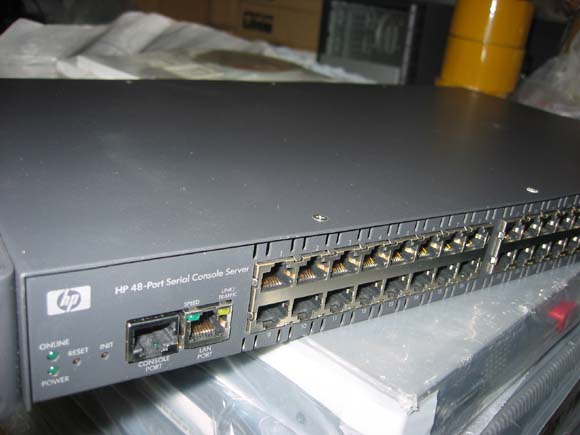基本信息
Console Server:
控制台伺服器 (
主機訪問伺服器,
控制台管理伺服器,
串口集線器,或
串列控制台伺服器)是一個通過
網路技術,提供訪問 系統控制台 的計算機設備的設備或服務。
詳細簡介
最常見的是,一個控制台伺服器提供了數
串口,然後再連線到其他設備的
串列連線埠的伺服器,如
路由器或
交換機。 該
主機連線,如連線的串列設備可以通過連線來訪問一個伺服器轉移到控制台
數據機,或通過與網路 的終端仿真器 的軟體,如
遠程登錄 或 使用SSH,保持存活的連線,允許遠程用戶登錄的各種遊戲機。
專用控制台伺服器設備,可從製造商在很多配置數量,以期從1至48串列連線埠數。 這些控制台伺服器主要用於安全
遠程訪問控制台連線埠與一個網路的Unix伺服器,Linux伺服器,Windows伺服器和任何設備。 其目的是讓網路運營中心(NOC)人員進行安全的遠程數據中心管理與
帶外管理資訊科技在世界任何地方的資產。 產品銷售作為控制台伺服器通常有非常先進的安全功能,以確保只有符合資格的人員可以訪問不同的伺服器,而任何通過LAN傳輸,或通過網際網路的數據是加密的。 行銷作為一個控制台套用伺服器產品是非常具體,因為它確實是指用戶要什麼事 -
遠程控制,監測,診斷和通過網路或網際網路解決設備。
有些用戶創造了他們自己的控制台伺服器使用現成的現成 商品電腦 硬體,低於通常是精簡與多
串口卡通常運行 的類Unix 作業系統,如
Linux作業系統。 這種“土生土長”控制台伺服器可以更便宜,特別是如果升級內置組件,從已退休,並允許更大的靈活性將
管理員完全控制在手中的設備的軟體驅動。 這包括充分利用和配置標準和加密一個廣泛的安全協定,使我們能夠創建一個控制台伺服器更安全。 但是,這個方案可能有一個更高 的TCO大多數工業控制台伺服器具有的物理dimension的一,少的可靠性和較高的機架-,since space requirements rack單位 (1U的)大小,而全- 1桌上型電腦 的PCI cards需要至少本版,使本土的解決方案更昂貴的一個案件 在同一地點 的基礎設施。
另一種方法,一些在伺服器控制台使用
群集 設定是
零數據機 線和 daisy-chain 遊戲機以其他未使用的
串列連線埠功能節點與其他一些主要的。
以下是英文版:
A console server (console access server, console management server, serial concentrator, or serial console server) is a device or service that provides access to the system console of a computing device via networking technologies.
Most commonly, a console server provides a number of serial ports, which are then connected to the serial ports of other equipment, such as servers, routers or switches. The consoles of the connected devices can then be accessed by connecting to the console server over a serial link such as a
modem, or over a network with terminal emulator software such as
telnet or
ssh, maintaining survivable connectivity that allows remote users to log in the various consoles without being physically nearby.
Dedicated console server appliances are available from a number of manufacturers in many configurations, with the number of serial ports ranging from one to 48. These Console Servers are primarily used for secure remote access to Unix Servers, Linux Servers, Windows Servers and any device on the network with a console port. The purpose is to allow network operations center (NOC) personnel to perform secure remote data center management and out-of-band management of IT assets from anywhere in the world. Products marketed as Console Servers usually have highly advanced security functionality to ensure that only qualified personnel can access various servers and that any data that is transmitted across the LAN, or over the Internet, is encrypted. Marketing a product as a console server is very application specific because it really refers to what the user wants to do - remotely control, monitor, diagnose and troubleshoot equipment over a network or the Internet.
Some users have created their own console servers using off-the-shelf commodity computer hardware, usually with multiport serial cards typically running a slimmed-down
Unix-like operating system such as
Linux. Such "home-grown" console servers can be less expensive, especially if built from components that have been retired in upgrades, and allow greater flexibility by putting full control of the software driving the device in the hands of the administrator. This includes full access to and configurability of a wide array of security protocols and encryption standards, making it possible to create a console server that is more secure. However, this solution may have a higher
TCO, less reliability and higher rack-space requirements, since most industrial console servers have the physical dimension of one
rack unit (1U), whereas a desktop computer with full-size
PCI cards requires at least 3Us, making the home-grown solution more costly in the case of a co-located infrastructure.
An alternative approach to a console server used in some
cluster setups is to null-modem wire and daisy-chain consoles to otherwise unused serial ports on nodes with some other primary function.

